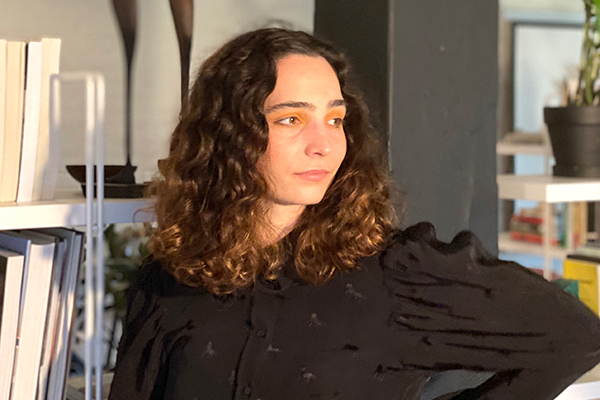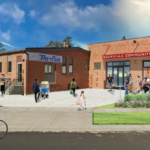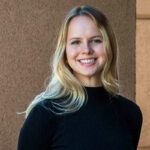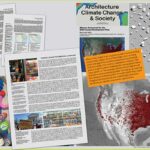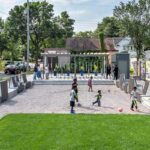Chicago designer/researcher Lindsey Krug joins SARUP as the Fitzhugh Scott Advancing Contemporary Theories Fellow. Krug holds a bachelor’s degree from the University of Pennsylvania and a master’s degree in architecture from the Harvard University Graduate School of Design. Krug previously practiced at WOJR, SITU Research, ODA and Studio Gang Architects. Her recent project, “Women Offer You Things,” was exhibited at the Guggenheim New York as part of the “Countryside, The Future” exhibition curated by OMA/AMO.
Krug’s work focuses on the architectural user – the body – and is an examination of how design solidifies and reinforces hierarchies, inequities and taboos into built form, creating the material backdrop for our collective bodily and cultural consciousnesses.
“Lindsey’s work highlights inequalities within the built environment,” said Zell, “raising questions about the relationship between our bodies and democracy.”
In studio and seminar courses at UWM, Krug will encourage student designers to research, design and articulate new metrics for centering the human body within an architectural project. Student designers will focus on typologies that are typically revered as pillars of democratic society as they explore architecture’s complex relationships to the bodies it houses.
Students will cast a wide net for source material – legal documents, zoning overlays, pop culture artifacts – “in order to explore the different means and methods design has used to document, represent, accommodate and influence bodies, inevitably inequitably,” Krug said.
“Letting students do the sleuthing and research with room to meander according to their intuitions,” she continued, “they can find their own lane, as designers, thinkers, and inhabitants of our built world.”
While accessing some inputs for their design projects may require digging around in archives, Internet holes and possible dead ends, others can be found in plain sight.
“We are seeing a national reckoning with our histories and policies as the COVID-19 pandemic evolves and racial injustices are made more and more visible,” Krug said. “Architecture, too, has much work to do in addressing its role in the inequitable positioning of bodies. I want students to feel empowered to foreground current concerns from beyond the classroom and to find ways to bring those into the discourse, if they so choose. Design is not done in a vacuum.”
The hybrid teaching environment that COVID-19 precautions demand for the upcoming academic year may even complement Krug’s teaching as student designers look to their home studios and to the Internet for architectural resources and artifacts.
“I am wary of design practice that emphasizes learning canonical references and methodologies as a rite of passage. Instead I’m excited by a counter-canonical approach understanding that each student is already equipped with a set of tools and experiences,” Krug said.
